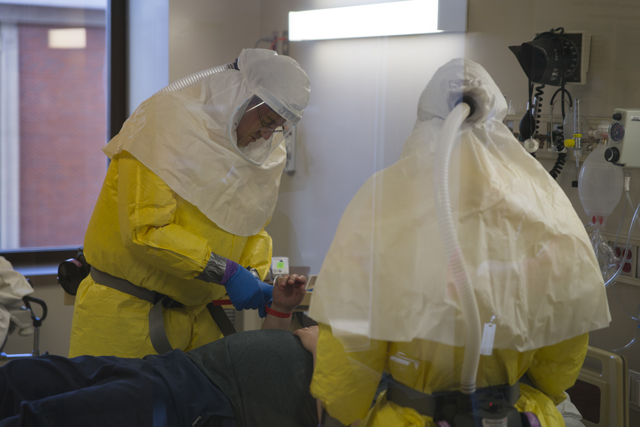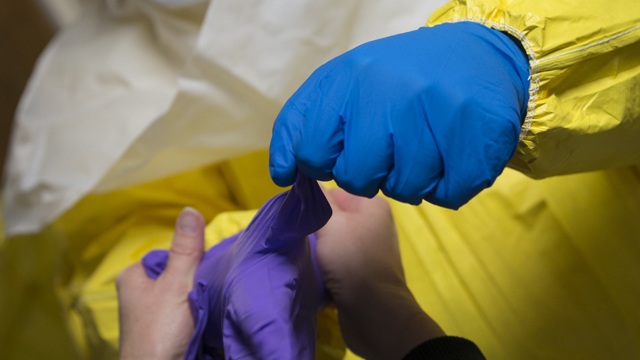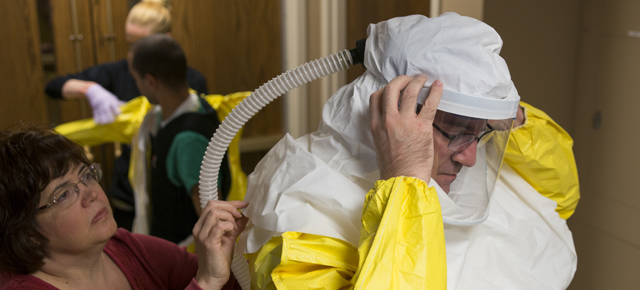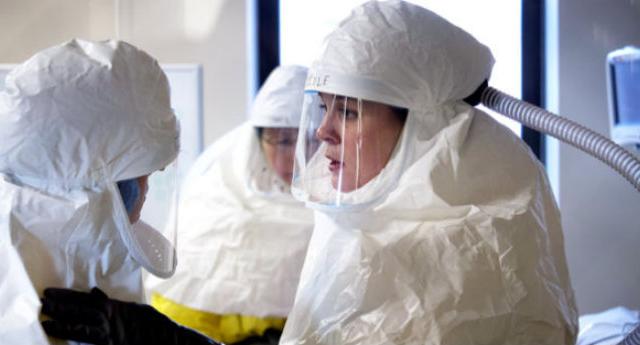Ebola has officially made it to the US, but there is absolutely no reason to freak out. That’s in large part thanks to Emory University Hospital’s state-of-the-art isolation ward, which is better-equipped to field Ebola cases than any ordinary hospital in the country. Here’s a look at the tech that keeps doctors and nurses safe.
Emory is one of four high-level biocontainment patient care units in the US; the others are located at the National Institutes of Health in Maryland, Rocky Mountain Laboratories in Montana, and the University of Nebraska Medical Center. We spoke with Dr. Angela Hewlett, associate medical director at the Nebraska Biocontainment Patient Care Unit — the largest of the four facilities — about biocontainment suits, wearing three pairs of gloves, and custom air pressure systems.
Perhaps the most comfort Hewlett was able to provide is that none of the super-fancy tech that these four high-level isolation wards have at their disposal is even necessary for Ebola. “There’s a big fear factor with this illness but really, these types of patients can taken care of at any good healthcare facility,” says Dr. Hewlett.
That’s because the Ebola virus easily dies outside of the human body, so unless you’ve been handling a sick person’s blood or feces, you are almost certainly A-OK. Ebola is pretty darn hard to get compared to an airborne disease like SARS or even the regular old flu. But with a mortality rate of up to 90 per cent — and over 50 per cent with the strain in the current outbreak — we still need to keep doctors and nurses as safe as we can. Here’s how Nebraska Biocontainment Unit keeps diseases like Ebola — and much, much worse — from spreading in the hospital.

Negative air pressure. As with Emory in Atlanta, the isolation unit in Nebraska is isolated from the rest of the general hospital. It runs on its own air circulation system, and the air is passed through a high-efficiency particulate air (HEPA) filter before it is vented outside of the building. That’s the same kind of precautions that you would see in a biosafety level 4 lab (the highest) that works with deadly or highly contagious diseases.
In addition, the biocontainment unit has negative air pressure, which means that air pressure inside the isolation rooms is slightly lower than that outside. Essentially, air is gently sucked into the room, so particles from inside the room can’t float out when you open a door. As another line of protection, ultraviolet lights zap any viruses or bacteria in the air or on surfaces.

Full-body suits and THREE pairs of gloves. The Biocontainment Unit is equipped with gear that covers you head to toe, in some places three times over. That includes personal respirators, headgear, full-body suits and gloves. Healthcare workers wear three pairs, including one thick pair that protects against needle accidents, and then two pairs of ordinary gloves so they have an extra pair to work with patients.
Entering and exiting the room becomes an elaborate production because putting on and taking off all the gear can take more than 10 minutes each way. A second person assists to make sure every piece of equipment is put on right and there are no rips or tears in any of the protective gear. Afterwards, every piece of equipment is wiped down to kill the pathogen; in the case of Ebola, simple bleach is enough to do the trick. The full-body suit is discarded after each use.

Training and training and training. Having fancy technology is great but not if you don’t know how to use it properly. “They have to go through really extensive training,” says Hewlett of the the 30-person team that works in the unit. They get 80 hours of training before they can begin, followed by monthly meetings and quarterly drills, where the photos in this post were taken.
It’s worth reiterating that most of this equipment and these procedures go above and beyond protecting for Ebola. The air systems and full-body suits are really there to guard against possible airborne diseases, like smallpox or SARS or some highly contagious avian flu viruses that may emerge in the future.
In fact, the CDC’s current guidelines for treating Ebola in U.S. hospitals require only gloves, goggles, a facemask, and a gown in most situations. Even if someone inadvertently brings Ebola to other hospitals, it’s highly unlikely to spread in the U.S. The situation is different in Africa, where inadequate equipment and fear of healthcare workers has contributed to the worsening situation.
A State Department official did visit Nebraska to see whether the unit would be ready to accept any Ebola patients in the future, though the facility hasn’t yet been used despite being open for nine years. There hasn’t been a disease serious enough to merit it. “This is good thing,” says Dr. Hewlett, “However with world travel the way it is, it is inevitable these things are going to come eventually.” If and when Ebola does come to the U.S. again, we are definitely prepared, which is not something we can say about what else may be coming down the line.
Pictures: University of Nebraska Medical Center
